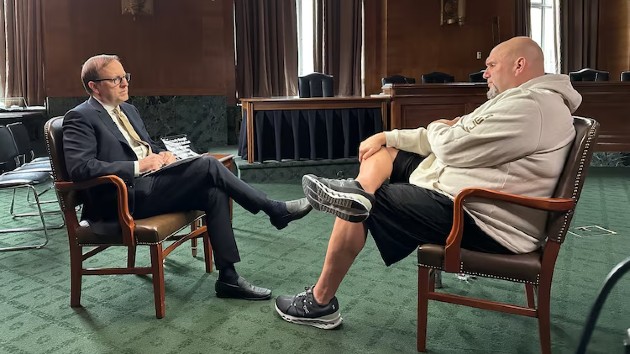Is 2022 the last hurrah for political ads on big platforms?
Written by ABC AUDIO on January 6, 2022


2022 could be the year that the big internet platforms pull the plug on paid political advertising, some in political campaign circles believe.
In fact, Higher Ground Labs, which invests in progressive campaign tech companies, states it clearly in its 2022 Investment Thesis: “All large technology platforms will limit or outright ban paid political activities.” The thesis argues that voters are growing less persuadable by political messages from strangers that show up in their social media feed. “[C]ommunities are moving towards closed, trusted information ecosystems,” the document states.
From the tech platforms’ point of view, political ads may be more trouble than they’re worth. The ads contribute relatively little to the bottom lines of companies like Meta (formerly Facebook) and Google.
Twitter was the first of major social platforms to ban political ads, in October 2019. “We believe political-message reach should be earned, not bought,” then-CEO Jack Dorsey tweeted.
Meta, meanwhile, has stuck to its original position that paid ads are political speech, which should be protected, and not fact-checked by tech platforms. Meta continues to sell political ads, even though it’s a relatively small, uneven business. CEO Mark Zuckerberg has said the business contributes less than 1% of the company’s overall revenue.
Political advertising is a very seasonal business, points out Antonio Garcia Martinez, who managed ad products at the former Facebook until 2018 (and later quickly lost a job at Apple over some controversial lines in his 2016 book Chaos Monkeys). He’s now a fellow at the conservative tech policy group Lincoln Network. Political ads aren’t easy operationally, either, Martinez says. As of 2018, at least, Facebook’s political ads relied on a data infrastructure so specialized and siloed that it could scarcely be used to serve other types of ads. And the political ads infrastructure was further siloed by political party: GOP ads and Democratic ads were served and targeted using entirely different technology stacks. That’s mainly because voter data files imported from the two political parties to target the ads are very different in structure and content.
Making everybody unhappy
The biggest trouble with political ads, of course, is that someone, somewhere is always upset about them. They invite criticism from voices on both sides of the political divide. Some lawmakers have expressed outrage that big tech companies continue to profit from ads that spread misinformation and foster hyperpartisanship and radicalization. Others complain that tech giants have no right to pull the plug on paid ads, which would effectively shut down a direct communication channel to constituents, supporters, and donors.
Big tech companies have been called before Congress numerous times to explain their reasons for either permitting or rejecting political ads, as well as the methods they use for targeting specific audiences with those ads. The moderation of big tech content became a hot issue after the Mueller Report detailed how Russian troll farms bought political ads on what was then Facebook as part of a massive campaign to influence the 2016 presidential election.
Back in 2019, Meta COO Sheryl Sandberg told Bloomberg‘s Caroline Hyde that the paid political ads business is “not worth the controversy.” But the company has not exited it.
Both Meta and Google—by far the biggest sellers of online ads—stopped selling political ads for weeks around election day in 2020. The companies feared that political groups might place ads that lied about election results or sought to undermine confidence in the electoral process.
In November, Meta said it would put limits on the way political advertisers can micro-target ads. Starting this month, the company says it no longer allows political advertisers to target ads based on political, religious, or health content its users have accessed on Meta’s apps. But political advertisers can still bring lists of supporters (such as from donor lists) and ask Meta to micro-target its users with similar characteristics. Google also places restrictions on how political advertisers can target ads.
On both the Facebook and Google platforms, individuals and organizations placing political ads must complete a special process of verifying their identity and location to the platform. Both companies host searchable ad libraries and issue periodic transparency reports. They say they don’t allow misinformation about elections or health conditions (such as miracle cures for COVID-19) in political ads. But in general, neither company systematically fact-checks political ads, and they each rely—at least in part—on machine learning algorithms to detect ads whose content violates the rules.
“[W]e recognize that political ads are known for being hyperbolic, and we do not attempt to adjudicate every political claim, counterclaim, and insinuation,” said Google spokesperson Michael Aciman in an email to Fast Company. “Instead, we’re focused on ensuring that all ads on our platform comply with our ads policies, which strictly prohibit hate speech, and demonstrably false claims.”
Meta did not respond to a request for comment on this article.
The big platforms’ work to sanitize their political ads business may not be enough—not this year, anyway, as the appetite to regulate big tech platforms is growing in the Capitol, and paid political ads will once again be in the spotlight during the run up to the mid-term elections later this year.
“The nuisance of being called before Congress is becoming much greater than the profit at stake,” says Higher Ground Labs cofounder and partner Shomik Dutta, “and that trend is likely to accelerate.”
As for other major platforms, TikTok says it doesn’t allow political ads, although research shows that advertisers have found ways of getting around the rule. Snap continues to sell political ads, but in June, the company provided users an option to see less political and other sensitive content in the Snapchat app.
Political or not?
Banning political ads comes with its own set of problems. How does a tech platform distinguish a political ad from a nonpolitical one? A bank, for instance, might be allowed to post an ad describing its green initiatives, while an ad from an environmental group calling BS on the bank’s claims could be disallowed for being “political.” Making such determinations puts a lot of power in the hands of the management of a tech company. In practice, it might not even be a human who makes the decision, but rather a content moderation algorithm.
Yet, differentiating political ads may not even be the right question. After all, the content of a social media ad isn’t the only thing, or even the main thing, that can make them dangerous. Evan Greer of the digital rights group Fight for the Future explains that big web platforms like Facebook and Google have a unique ability to connect ad messages with voters who are ready to hear them and be persuaded by them—and they can do this at a vast scale. To do it, they leverage large stores of personal data—the social graph—collected through the continual surveillance of users as they move about the platform, and even as they browse the open web. The data can give clues to users’ interests, intents, beliefs, and biases.
Greer believes in putting guardrails around the collection of that personal data: “The way to reduce the harm is not to regulate speech but to regulate the surveillance, which is the thing that makes these platforms uniquely harmful and different [from] any other communication network we had in the past.” She believes that Congress should pass a strong federal privacy law, one that restricts the amount and the types of information that internet platforms can collect and store.
Uneven effects
The absence of paid political ads might also change the economics of campaigning. These ads offer a relatively inexpensive way to connect with voters, but if they were no longer available, cash-rich campaigns could simply move their ad dollars to other communications channels, such as TV or neighborhood canvassing, to get their message out. Campaigns with less cash at their disposal probably wouldn’t be able to do that, putting them at a disadvantage.
At a tactical level, campaigns might lose a major means of quickly addressing misleading claims an opponent made publicly.
Without paid political ads, campaigns and causes would also likely have to change their approach to creating digital content. They might have to get better at creating unpaid content—like clever memes or short share-worthy videos—which generates its own attention. “You have to say things in your own authentic voice and make people see it,” says Dutta.
Campaigns would have to learn to produce viral content. Unfortunately, viral content doesn’t mean good content. The most viral content on social media, after all, comes from names like Breitbart, Ben Shapiro, and Joe Rogan. These accounts routinely share news, opinions, and other content designed to inspire partisan rage–typically at the expense of the truth.
“When you start pushing people into the organic market, you get a lot of outrageous and inflammatory stuff,” says Lincoln Network’s Martinez.
In other words, campaigns, especially the less-monied ones, might be forced to join a race to the bottom.
— to www.fastcompany.com
The post Is 2022 the last hurrah for political ads on big platforms? appeared first on Correct Success.






